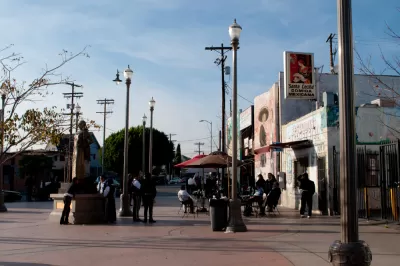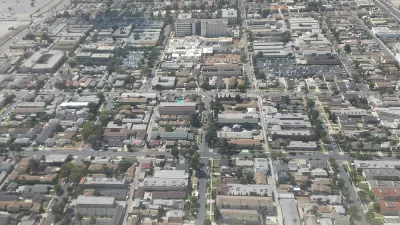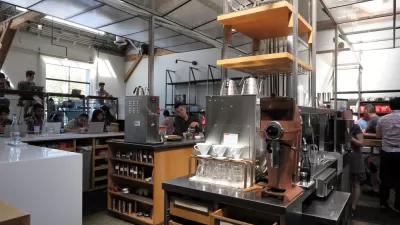In some Latino neighborhoods, the gentrifiers are also Latinos. The result is a complicated mix of culture, change, and resistance.

Ludwig Hurtado writes about the phenomenon of "gentefication" — when Latino neighborhoods are gentrified not by affluent white people, but by young, educated Latinos. "In essence, the aim of gentefication is to allow Latinx communities, usually low-income, [to] evolve without having their roots diluted into whiteness," says Hurtado.
The idea behind gentefication is a neighborhood retaining its Latino identity while bringing in economic development and ensuring that residents are not displaced in the process, say proponents. In Boyle Heights, a neighborhood in East Los Angeles, Latinos are opening coffeehouses, wine bars, and record stores and they say they are trying to provide what millennial Latinos want. "But in making a Latinx community more attractive to young Latinxs, gentefiers have to ask themselves if they’re subsequently making their communities more attractive to affluent white folks as well," notes Hurtado.
Anti-gentrification groups have been active in Boyle Heights, and they oppose all efforts to change the neighborhood. "They have been a leading force for keeping 'hipster businesses' out of the Boyle Heights and boycotting those that managed to make their way in," says Hurtado.
Community advocates say that economic development needs to consider the effects of gentrification, regardless of who is behind it. Preventing displacement is central, particularly in low-income neighborhoods with a high percentage of renters, and strategies such as land trusts can help promote homeownership in places such as Boyle Heights.
FULL STORY: What Happens When Latinx People Gentrify Latinx Communities

Maui's Vacation Rental Debate Turns Ugly
Verbal attacks, misinformation campaigns and fistfights plague a high-stakes debate to convert thousands of vacation rentals into long-term housing.

Planetizen Federal Action Tracker
A weekly monitor of how Trump’s orders and actions are impacting planners and planning in America.

In Urban Planning, AI Prompting Could be the New Design Thinking
Creativity has long been key to great urban design. What if we see AI as our new creative partner?

King County Supportive Housing Program Offers Hope for Unhoused Residents
The county is taking a ‘Housing First’ approach that prioritizes getting people into housing, then offering wraparound supportive services.

Researchers Use AI to Get Clearer Picture of US Housing
Analysts are using artificial intelligence to supercharge their research by allowing them to comb through data faster. Though these AI tools can be error prone, they save time and housing researchers are optimistic about the future.

Making Shared Micromobility More Inclusive
Cities and shared mobility system operators can do more to include people with disabilities in planning and operations, per a new report.
Urban Design for Planners 1: Software Tools
This six-course series explores essential urban design concepts using open source software and equips planners with the tools they need to participate fully in the urban design process.
Planning for Universal Design
Learn the tools for implementing Universal Design in planning regulations.
planning NEXT
Appalachian Highlands Housing Partners
Mpact (founded as Rail~Volution)
City of Camden Redevelopment Agency
City of Astoria
City of Portland
City of Laramie




























